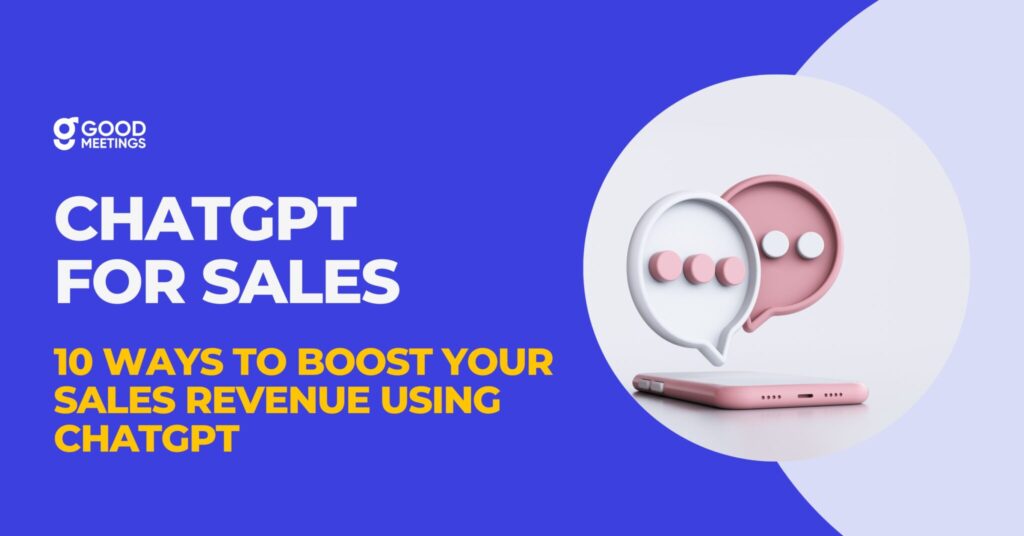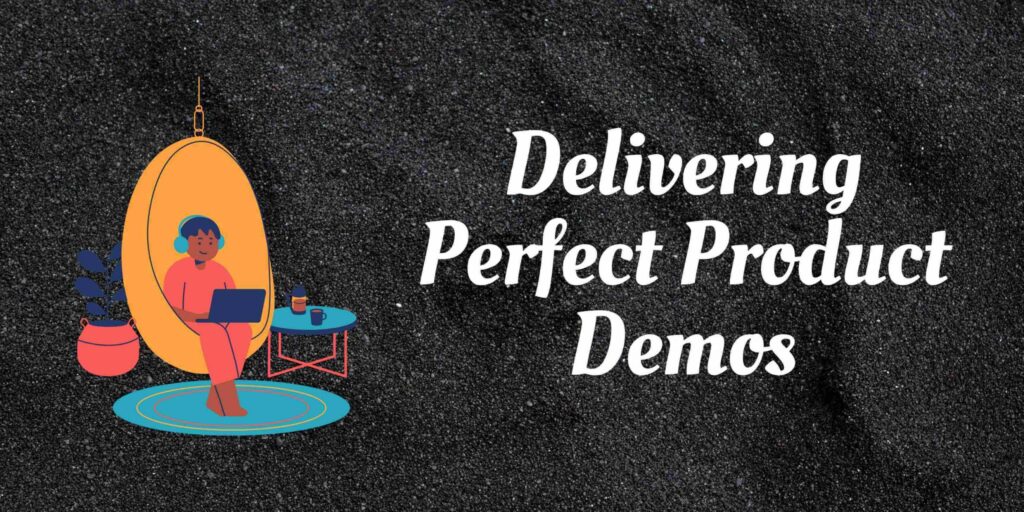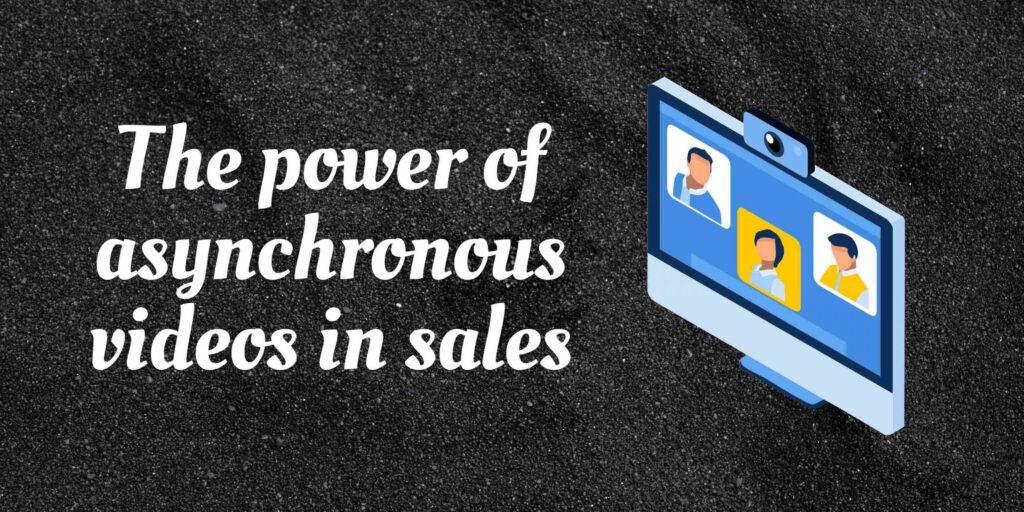
When you are on a Sales (Product) Demo call, it is the stage that decides the fate of the deal. After all that cold calling, delivering the perfect sales pitch, working through all those sales navigation tips and wooing your client into trying your product, it is finally the time for that product demo that will give you sales.
Do the demo right and you seal a deal, make a sale, be happy! Take one step wrong and all that work is wasted. Jittery already? Why not?
This is why it is extremely important to deliver not a near-perfect but the perfect product demo.
A perfect Sales (Product) demo leaves your client with a good feeling about their future with your product.
But before we dive into the framework for product demos, let’s first get familiar with the following 12 sales demo tips that will prove handy to help close a deal.
14 sales demo tips that will prove handy to help close a deal
Talk about benefits
Always talk about benefits and value to the user and not the features unless specifically asked. Your slides can present the features while you talk about how those features resolve the client’s pain points.
Speak the language of client
Pick up any company-specific jargons that they use from your previous interactions or their website and use them fluently in your demo.
Customize
Customize the product demo w.r.t. the client – not just the company but also specific to who is your audience for the demo. Gather data from press releases, interviews, etc. to deliver a product demo that the client feels is designed explicitly for the client.
Also read, the win win art of sales negotiations.
Keep it simple
Overcomplication kills a good sales demo. Don’t try to show everything that your product offers. This will complicate your message and overwhelm the client and they will think they have wasted time. Instead keep your product demo simple with the key features.
Spin a story
Spin a story around the product demo. No one is interested in boring product demos. Tell about how one of your clients benefited from a specific feature or create an imaginary one.
Begin with the best part first
Always begin with the best part first. Never leave the good thing till the end. This approach hooks the client’s attention in the first few seconds and they will be excited to know how they can get to that good thing.
Don’t interrupt
Never interrupt the prospect during a demo call.
Be approachable
If the client requests something hard to fulfil, mention that you are noting it down and you will take it to the developers and let them know.
Read more about handling sales objections that the client might have.
Don’t tell wrong answers
If the client asks you something that you don’t know the answer to, mention that you will follow up after thorough research.
Do not fumble
If something goes wrong during the demo, do not fumble. Mention that this is just the perfect opportunity to show them how you provide support services and fill the time gap until the issue is resolved with a relevant conversation. Load the pages that are heavy to load beforehand or fill the time gap between the page request time and the page coming up with an interesting conversation.
Have the best tools
Use tools like Gong and GoodMeetings for more effective demos and to enhance your productivity.
Keep it between 15 to 30 mins
Ensure that the demo length is between 15 to 30 mins. This is a product demo and not product training.
Include CTA
Always include the CTA so that the client knows how to connect with you again.
Follow up
Don’t shy from following up with the prospect. They are very busy people but they also need your solution.
Product demo calls are presentation of your product capabilities and features in action. Until this stage, your client will have read about your products through email, brochures, concept videos, etc.
The product demo stage is their first chance to have a look at your actual product.
While your presentation talks about the capabilities and features of your product, it is your responsibility as a sales representative to paint a story about how these features will benefit the client.
Framework for delivering the perfect product demo
1. Preparation to deliver perfect product demo
- Know your client and audience
Get to know your client well. Understand their business, pain points and their expectations. Gather information on where they want to be in the future and think about how you can help them get there. Also, figure out to whom you will be talking – the decision-maker, the influencer or both.
Here about the evolution of customers in a remote world.
- Structure your demo well
Take time to think about how you will structure your demo call for this particular client. It is always suggested to start with the big bang first. Don’t keep the good stuff for the end. Wow them in the first minute of your demo call. Include what their future will look like with your product on the first slide.
However, if your gut feeling says that your client is more process-oriented than outcome-oriented, the traditional approach of structuring the demo call is more useful. In this approach, you present the client challenges first (it shows that you understood them well), then how your product can benefit
them feature-by-feature and then present the final big bang to wow them. Which of the two approaches will work for you depends on how well you know your client.
Also read, identifying triggers and buying signals.
2. Set the product demo call agenda
Ever been in a presentation and tried to look at the number of slides in the presentation before the presenter begins the slide show? Ever tried to figure out the sequence number of the part of the presentation that interests you when the presenter shows the timeline?
All of us like to know how much and on what are we going to spend our time. Emailing or communicating a set agenda before the actual demo ensures that the client knows what they are getting into. Better still, mention the time required for each component on your agenda. Set a few minutes for introduction, pleasantries, and the next few minutes for basic questions and so on.
3. Listen to your client
The day and time of the demonstration are here. You are itching to present to the client all that you have so laboriously prepared for this meeting. However, take a deep breath and wait. Even after you have done all your research, maybe, there is still something that your client can tell you that will help you deliver that perfect product demo.
Don’t start talking yet. Instead, encourage your client to ask questions. State what you have understood about them and ask them if your understanding is correct. If you had a doubt about a certain point during your client research and you could not find the information anywhere, this is your time to ask for it. Re-clarify the expectations of the client before the demo call.
Also read about objection handling in Sales.
4. Demonstrate the actual product
Now is the time to start with your presentation. Contrary to the intuition that this is the stage where the sales rep talks the most, you should always allow the client to talk more. The golden 20:80 talk to listen ratio is applicable in this stage too. Structure your presentation with a lot of questions.
Example:
During your market research, you have identified the pain points of the client. Pick the top three pain points and define the value proposition of your product around these pain points.
If you are looking to sell software that organizes documents efficiently, the pain points could be –
- Documents on the computers across the company,
- Difficult to find the docs even on machine,
- Difficult to share docs, especially, the large ones with a group of people. You could structure your product demo around:
Value Proposition 1: Centralized cloud storage of docs accessible to everyone.
Value Proposition 2: Automatic rule for documents with similar content and names
Value Proposition 3: Easy to share in the company and with the external stakeholders via shareable links with access management
While you explain these value propositions, demonstrate how you would exactly create a central repository and start storing docs, how you would create shareable links, etc. Invite the clients to ask questions if they understood the process correctly or if they need to run through the process again. Ask them if the process meets their needs exactly or would they want some sort of customization.
If you want to further improve the efficiency of your product demo calls, you could choose a tool like Gong or GoodMeetings. Especially, with GoodMeetings, you have the option to get real-time insights on user attentiveness, AI-based nudges to the sales rep basis the conversation, automated note-taking and incognito coaching by an experienced sales rep.
These features help you to tune your product demo basis the client requirements. Additionally, the readily available sales playbook with the option of real-time search helps you to readily provide any information that the client requests.
5. Close with a Call to Action
Post the demo call, encourage the clients to ask any clarifying questions. Send a summarizing email with minutes of the meeting and request a follow-up meeting. Share any relevant data, videos or brochures. Include a clickable button in the email which takes them directly to a meeting scheduler. Furthermore, you could also a feedback form for the product demo.





